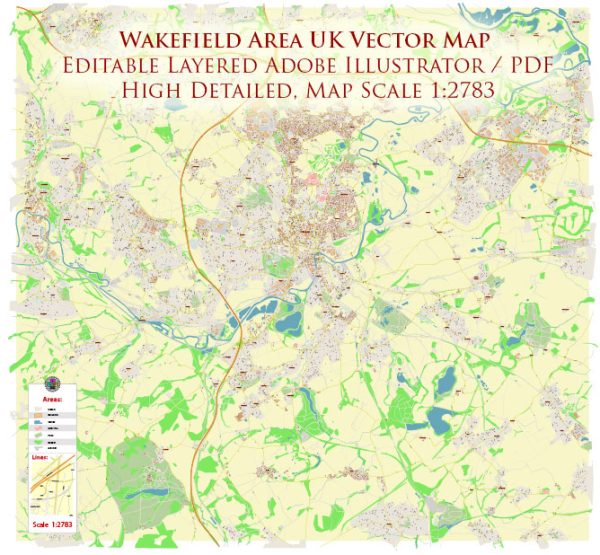Wakefield is a city in West Yorkshire, England, with a rich history dating back to medieval times. The Wakefield area, including the city and its surroundings, has experienced significant urban development over the centuries. Here is an overview of key phases in the history of urban development in the Wakefield area:
Medieval Period:
- Foundation and Growth:
- Wakefield has ancient origins, with evidence of settlement dating back to the prehistoric and Roman periods. The city itself was founded in the 10th century and expanded during the medieval period.
- Market Town:
- Wakefield became a market town, and its economy thrived on agriculture and trade. The market played a crucial role in the local economy, attracting merchants and residents from surrounding areas.
Tudor and Stuart Periods:
- Role in the Wars of the Roses:
- During the Wars of the Roses in the 15th century, Wakefield gained historical significance. The Battle of Wakefield (1460) was a key conflict in this series of medieval civil wars.
- Industrial Development:
- The later Tudor and Stuart periods saw the emergence of early industries, including textiles and coal mining. The River Calder, flowing through Wakefield, played a role in supporting industrial activities.
18th and 19th Centuries:
- Canal and Transportation:
- The construction of the Aire and Calder Navigation canal in the 18th century improved transportation and trade links, contributing to the industrial growth of Wakefield.
- Expansion of Textile Industry:
- Wakefield became known for its textile industry, with mills and factories contributing to the economic development of the area.
- Railway Development:
- The arrival of the railway in the 19th century further enhanced Wakefield’s connectivity. The city became an important railway hub, facilitating the movement of goods and people.
20th Century:
- Urbanization and Population Growth:
- Wakefield experienced urbanization in the 20th century, with population growth and the expansion of residential areas. Suburban developments accommodated the rising population.
- Post-World War II:
- The post-World War II period witnessed changes in industry and the economy. Deindustrialization affected Wakefield, leading to shifts in the economic landscape.
Contemporary Wakefield:
- Cultural and Historical Preservation:
- Wakefield has made efforts to preserve its cultural and historical heritage. The city center features historic buildings, including Wakefield Cathedral and the Chantry Chapel.
- Retail and Commercial Development:
- Wakefield’s city center has seen developments in retail and commercial areas. Shopping centers, restaurants, and cultural venues contribute to the city’s vibrancy.
- Education and Services:
- The city is home to educational institutions and provides a range of services, making it a center for both learning and administration.
- Regeneration Projects:
- Various regeneration projects have aimed to enhance the city’s infrastructure, public spaces, and overall quality of life.
- Cultural Events and Tourism:
- Wakefield hosts cultural events and festivals, attracting visitors interested in exploring its history, arts, and entertainment.
The Wakefield area’s urban development reflects its historical roots as a medieval market town, its industrialization during the 18th and 19th centuries, and its adaptation to modern challenges in the 20th and 21st centuries. The city continues to evolve as it balances historical preservation with contemporary development.


 Author: Kirill Shrayber, Ph.D.
Author: Kirill Shrayber, Ph.D.